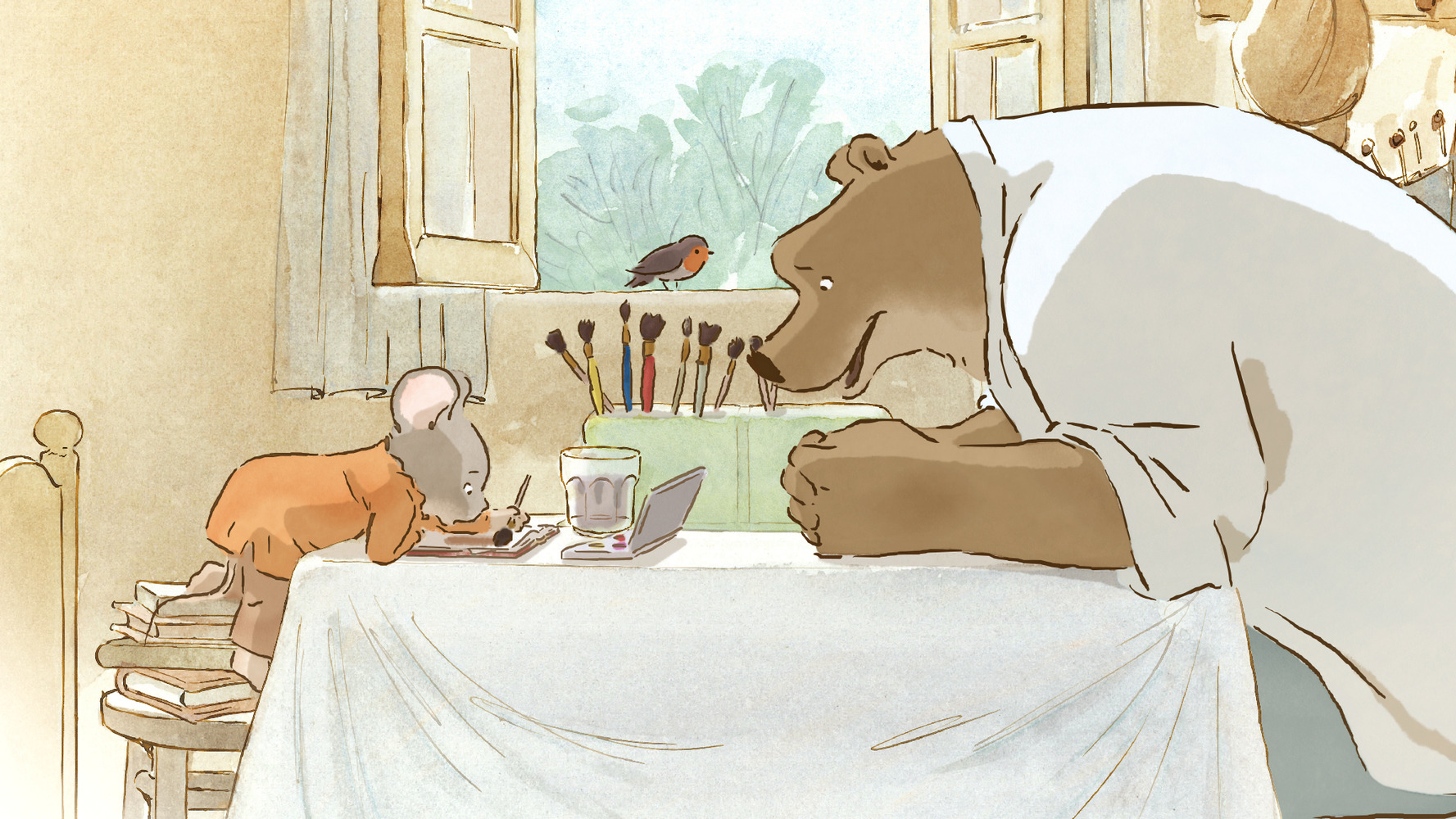—
Ernest & Célestine (2012)

Ernest & Célestine is a heartwarmingly faithful adaptation of the popular Belgian children’s stories by Gabrielle Vincent. The story is centered around the budding relationship between the two titular characters, Ernest the bear and Célestine the mouse, who struggle with their friendship in a world where their societies are at odds with one another. Although you can likely determine the theme of the story from a mile away – one of bigotry and intolerance – it is the sincere methodology in which directors Vincent Pater, Stephane Aubier, and Benjamin Renner have pieced this film together that captures the imagination and makes Ernest & Célestine a clever depiction of a timeless bedtime story.
Reflecting the musical talent of Ernest and the artistic talent of Célestine, the art and music of Ernest & Célestine are its greatest strengths. Off the bat, the film eases you in with its beautiful, hand-drawn artwork; the storybook universe is brought to life by a number of gorgeous set pieces that could all be suitably hung up as living room paintings, and the computer animation allows characters to betray a ton of emotion with just their movements and expressions. Ernest’s dopey naivety and theatrical flair, combined with Célestine’s warm optimism, wits, and fierce personality, provide a great dynamic that makes their growing relationship natural and lovable.
Meanwhile, the sound design is crisp and clear, whether it be the soothing vibrato of Ernest’s piano, or the individual clatter of falling plates and pots as he tips over everything in his cabin. The film’s soundtrack is equally robust, with each song having a child-like bounce and step to it that vitalizes each scene.
Perhaps the most surprising part of Ernest & Célestine is that there is always something interesting going on, whether it be in the foreground or background. When Ernest first comes back to his cabin, he throws his hat away into the dark and misses the coat hanger, which quickly falls with a resounding clank. The animators know when downtime can be used to insert a little whimsical humor, and when to let silence take over and do its work. As a result, the world feels fully alive, as if even the props and surrounding scenery are interacting with its characters and, oftentimes, mocking them.
Unfortunately, the price of intricate detail is the film’s short 80 minute runtime. It feels as if the movie is boiled down to its best parts, which inevitably left me feeling unsatisfied by the film’s quick and sudden ending – although I enjoyed every minute, I was left wanting more as the credits started rolling.
The film does not try to play down to its audience – there are some beautifully dark moments in the film, and they stick out in my mind as some of the most unique and memorable of the film. Together, the artists and musicians of Ernest & Célestine even manage to insert a few surreal dream sequences, each of which have their own unique style and are gorgeous with or without their contexts.
In the end, Ernest & Célestine is a simple children’s story about a bear and mouse who fall in love despite society’s bigotry and intolerance. Yet, in its sincerity and clever screenplay, the film shines as a beautiful European alternative to the standard 3D-animated Hollywood fare.